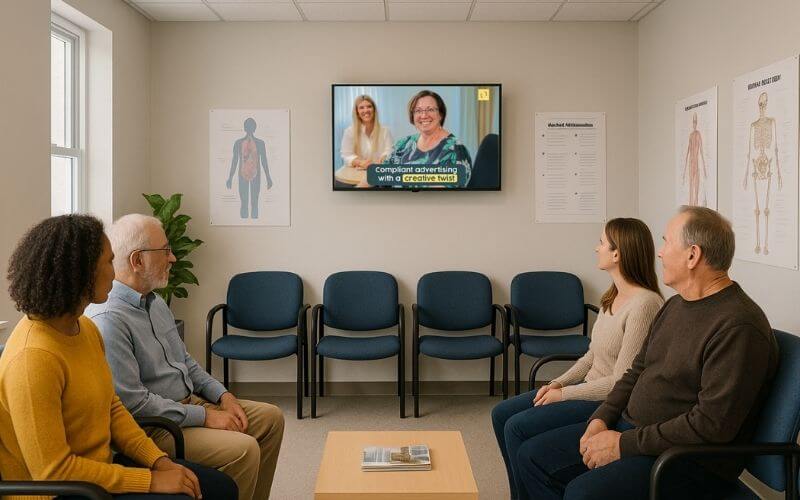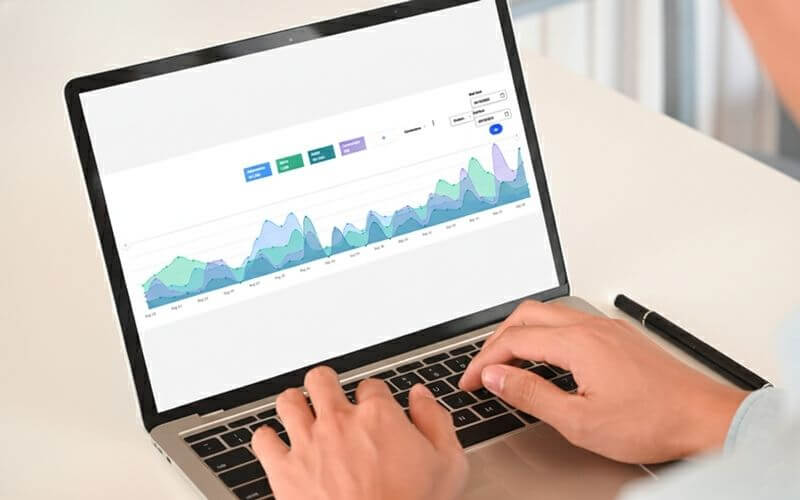Healthcare marketing is more sophisticated than ever, but it can also feel more complex. With so many options available, it’s easy to get confused, especially when marketing tools sound like they do the same thing.
Take Google Display and programmatic advertising. Both serve display ads. Both use data. Both promise reach and results.
So, what’s the real difference between them?
Google Display advertising explained
Google Display ads appear across the Google Display Network, a collection of over two million websites, apps and videos. These ads are shown based on audience insights from Google’s ecosystem, such as their interests, demographics and browsing history.
Let’s say someone recently watched YouTube videos about sports injuries. They may then be shown a physiotherapy clinic’s ad while browsing a health blog within Google’s network. This approach helps you stay visible to potential patients who are already engaging with health-related content.
But there is a limitation. Google Display only serves ads within its own ecosystem. That means if your ideal patient is browsing a premium health publication or a niche healthcare site outside Google’s network, you may miss them entirely.
What is programmatic advertising?
Programmatic advertising casts a wider net, giving you access to ad space across a vast range of websites, apps and digital platforms beyond Google’s network.
This includes premium, brand-safe, healthcare-specific sites like Mayo Clinic, Healthline and WebMD. These platforms are where patients actively research care options, giving you the opportunity to connect with them in trusted environments.
Imagine you run a physio clinic. With programmatic advertising, your ad for supporting back surgery recovery could appear next to an article about post-operative rehab on a trusted site, seen by a 50-year-old woman in your postcode who is browsing on her iPad. You are reaching the right person, in the right place, at the right time.
But what really sets programmatic apart is the targeting power.
Precision targeting for healthcare
Programmatic platforms give you access to a broader range of real-time targeting options, including:
| Custom contextual signals | Target audiences based on the specific content they are reading, watching or engaging with across thousands of premium publishers. |
| Advanced geolocation and device data | Use hyper-local targeting (by postcode, weather trigger or point of interest) and cross-device tracking for more personalised delivery. |
| Lifestyle and behavioural data segments | Reach audiences based on real-world behaviours, app usage, financial intent or health-related signals that are not available through Google. |
| Dynamic audience modelling | Tap into predictive AI and lookalike audiences to find new patients who behave like your best converters. |
| Omnichannel reach | Extend beyond display and serve ads across native placements, connected TV (CTV), digital out-of-home (DOOH), digital radio and premium publisher platforms. |
This ability for precise targeting means your campaign isn’t just seen. It is seen by the right people, at the right moments, across the right media.
Smarter creative with dynamic optimisation
Programmatic also supports dynamic creative optimisation (DCO).
DCO automatically adapts ad elements such as images, copy and calls-to-action based on who is viewing them. In practice, this means a health brand can deliver highly personalised messaging without needing to create dozens of ad variations manually.
For example, a MedTech brand selling at-home blood pressure monitors might use DCO to show different product messages based on the viewer’s age, location or the content they are consuming.
A 60-year-old reading about hypertension management might see a message about easy home tracking, while a 35-year-old parent reading about family wellness may see a bundle offer.
Can you combine Google Display and programmatic advertising?
Yes. In fact, the most effective campaigns use both.
By combining both, you get:
| Broader reach | Google covers a large network, but programmatic extends your visibility to platforms that Google does not access. |
| Layered targeting | Google Display builds awareness through search-based intent. Programmatic builds intent through behaviour and lifestyle targeting. |
| Creative flexibility | Use Google for brand awareness and programmatic for immersive, highly targeted campaigns using video, native or audio formats. |
There is some overlap. Both platforms may compete for space on the same websites. This overlap can actually work in your favour, helping you secure ad placements when one platform’s bid does not win.
Ready to elevate your marketing?
At Splice Marketing, we build strategic, omnichannel campaigns that reach patients wherever they are.
From websites and mobile to in-clinic displays, we help you connect with the right audience using strategies that comply, connect and convert.







